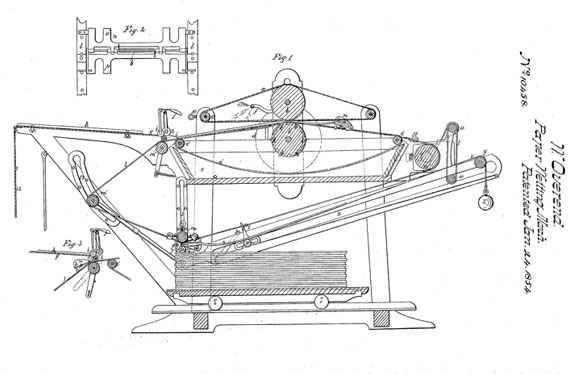January 24
The United States Patent Office on January 24, 1854, granted to William Overend of Cincinnati a patent for “intended to give to paper the proper dampness, in order to prepare it for the press. A given quantity of paper is placed upon the table, and is fed into the machine by nippers, when it is carried forward between wetted blankets, passing between rollers, and is finally deposited on a pile beneath the machine, having received the required amount of moisture in its passage.”
Luther Ringwalt, in his American Encyclopedia of Printing, listed three other patents granted in the mid-19th century for wetting machines. But the rapidly advancing technology of the printing press was already making such devices obsolete. For four hundred years it had been necessary to wet paper to obtain the best results in printing, but the demands of the industrial revolution for the high-speed production of print were soon to change radically the manufacture of paper to meet the more precise characteristics of power-driven rotary and flat-bed presses. The so-called “slick” machine-finished and coated papers are no longer adaptable to the dampening process, which is now practiced only by those printers who wish to emulate the old craftsmen, printing uncoated paper at slow speeds on a power press or a sheet at a time on a hand press.
